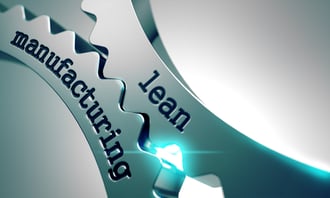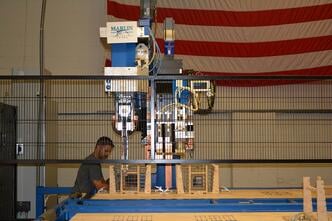 Manufacturers should always seek improvement. Continuous improvement is one of the foundational practices of the Toyota Production System, otherwise known as lean manufacturing.
Manufacturers should always seek improvement. Continuous improvement is one of the foundational practices of the Toyota Production System, otherwise known as lean manufacturing.
As a company, Marlin Steel has relentlessly pursued the philosophy of find constant improvement, with great results. By never settling for “good enough” and always working to find newer, more efficient ways to get things done, Marlin Steel has grown from being a company on the ropes after the bagel basket market imploded and foreign companies muscled in with cheaper-than-the-cost-of-the-steel products, to being more successful and productive than ever.
So, how can manufacturers speed up their manufacturing processes?
Here are a few things that we here at Marlin Steel have seen make a difference, not only for ourselves, but for our customers as well:
Manufacturing Speed Hack #1: Automate!
 Manufacturing automation technology has improved by leaps and bounds in the last few decades. Jobs that once required manual labor can now be handed off to incredibly precise assembly robots.
Manufacturing automation technology has improved by leaps and bounds in the last few decades. Jobs that once required manual labor can now be handed off to incredibly precise assembly robots.
Not only can these automated machines do the job faster than manual laborers, they do it with greater accuracy and consistency than hand-assembly techniques could ever hope to match. Unlike people, machines don’t get tired or worn out from hours of doing the same job over and over again.
The result is better parts with fewer flaws being made faster, saving time and labor while increasing productivity.
Manufacturing Speed Hack #2: Educate!
No matter how heavily your operation relies on manufacturing automation, the human element is still critical to your success. Robots still need to be maintained, programmed, and monitored to ensure peak production value, and the workers who operate and maintain these robots should have up to date knowledge concerning their work.
Not only should these personnel be familiar with the operation of the factory automation, they should be familiar with the product being made.
For example, if your employees make steel products, they should know about the different kinds of steel that are available, what their mechanical properties are, and how well that type of steel is suited to the purpose of the final product.
With intimate knowledge of your products and procedures, employees are better equipped to find ways to optimize your production process.
Beyond training employees about the details of their assigned tasks, cross-training employees for multiple roles/tasks can also improve speed for your production.
How so?
There are two major speed benefits that come from cross-training:
- Employees Think about More than Just Their Phase of the Production Process. Cross-trained employees are more likely to take into account how the efficiency improvements they enact will affect productivity further down the line.
- Work Doesn’t Have to Stop Because of a Single Missing Key Employee. While this doesn’t speed up production per se, it does keep production from being slowed by the absence of a single person because he or she won’t be the ONLY person who knows how to perform a given task.
Sometimes, avoiding the loss of momentum is just as important as gaining speed, and cross-training employees for multiple tasks helps with this. By taking into account how altering one phase of the production process might affect other processes further down the line, employees are less likely to cut corners that will ultimately lead to delays later.
Manufacturing Speed Hack #3: Minimize Transitional Processes
In many production processes, parts have to be moved from one machine to another. In fact, many parts have to be moved from one kind of container to another one that is specialized for a specific process.
For example, parts might have to be moved from a soft PVC-coated basket to a stainless steel or Inconel-based heat treat basket since the soft polyvinylchloride coating of the first basket cannot take the high temperatures associated with a heat treat process.
A great solution for this issue is to use a custom metal basket that has been optimized to withstand multiple phases of your process instead of just one. This saves time loading and unloading baskets between steps of your parts finishing process.
To further reduce transition time from one process to the next, consider rearranging equipment on the production floor to shorten the amount of time it takes to carry parts loads from one machine to the next.
See for yourself how a leading automotive manufacturer overhauled their parts washing process to make it faster and more efficient by checking out the case study at the link below:


.gif)


